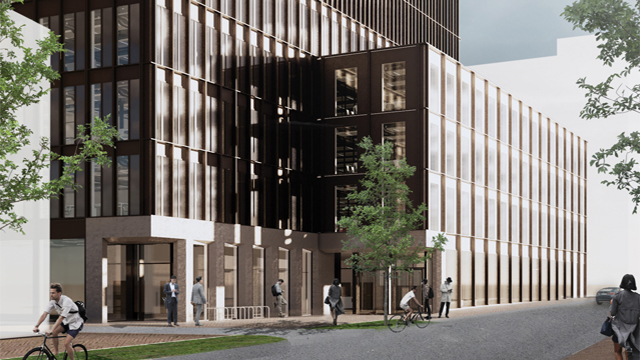 A recent appeal illustrates how judges who see and hear no evidence are nevertheless entitled to overturn a judgment
A recent appeal illustrates how judges who see and hear no evidence are nevertheless entitled to overturn a judgment
A year on from the decision at first instance, the Court of Appeal has delivered judgment in Titan Europe 2006-3 plc v Colliers International UK plc (in liquidation) [2015] EWCA Civ 1083; [2015] PLSCS 307. Let me recap briefly. In 2005, Colliers valued some tenanted land in Germany at €135m. The financial crisis arrived in 2008; the tenant became insolvent in 2009; and the land fell in value to a sum in the region of €22.5m. Colliers was sued for professional negligence, and valuation experts were appointed by each party. Titan’s expert valued the property at €76.6m; Colliers’ expert at €125.9m. Each expert was criticised severely in court, for different reasons, and the judge as a result had some difficulty evaluating the evidence. Ultimately, he decided that Colliers should have valued the property at €103m. Because Colliers’ valuation lay outside the 15% bracket around that figure, which the judge decided was the appropriate range for non-negligent valuations, Titan was awarded judgment for the difference of €32m.
Colliers appealed against both the finding of negligence and the decision that Titan was entitled to damages in respect of that negligence.
The appeal process
The Court of Appeal rarely sees fresh evidence on an appeal, and it is vanishingly rare for it to hear oral evidence. It will only allow an appeal in a case of this kind where the decision of the judge was wrong. Where the judgment appealed against depends entirely on the judge’s assessment and evaluation of the relevant evidence (which in this case was primarily, though by no means solely, oral), an appeal court simply does not have the advantages of the trial judge, who will have observed the witnesses give evidence, will have been able to assess their demeanour and, generally, will have the “feel” of the case.
Since the Court of Appeal does not have these advantages, the trial judge’s assessment of the witnesses will naturally carry significant weight. As Lord Shaw memorably said in Clarke v Edinburgh & District Tramways Co Ltd 1919 SC (HL) 35: “In courts of justice in the ordinary case … witnesses … may have in their demeanour, in their manner, in their hesitation, in the nuance of their expressions, in even the turns of the eyelid, left an impression upon the man who saw and heard them which can never be reproduced in the printed page.”
In Titan, the hearing before Blair J took eight days. During that time, the judge had plenty of opportunity to weigh up the experts – and made full use of that opportunity, as his judgment illustrates.
So now let’s see what the Court of Appeal did. But first, remember the headline stats: Colliers – €135m; expert A – €76.6m; expert B – €125.9m; judge – €103m.
In the Court of Appeal
The Court of Appeal was impressed by two findings the judge had made. First, that a valuation below €100m would not have carried any credibility in the market; and secondly that the property in question had been sold and valued a number of times in the five years preceding the valuation, at values ranging from €95m to €134.5m, which the judge had found significant.
Colliers’ advocates produced a graph illustrating all these figures, and submitted that Colliers’ valuation was in line with all the available evidence of the approximately contemporaneous transactions and valuations of the property itself, which were much the most cogent evidence of a true valuation. They also submitted that the judge had wrongly excluded the most recent valuation (a June 2005 share sale), as well as the yield derived from that valuation, all of which rendered dubious his selection of €103m – a figure that was “perilously close” to the absolute minimum of €100m that would have carried any credibility in the market.
The Court of Appeal could see no answer to these criticisms of the judgment, and were persuaded that a more realistic valuation was €118.3m. Since Colliers’ valuation was within 15% of that figure, Colliers could not therefore be liable.
In reversing the judge’s conclusion, the Court of Appeal emphasised that none of his basic findings of fact had been challenged by Colliers; it was only his inferential conclusions as to the “correct” value based on his earlier findings that were subject to challenge.
Their Lordships’ analysis was delivered briefly in nine pages. Whether it is accurate to describe valuation as an art rather than a science, some might say that the judgment deals in arithmetic rather than valuation, with its dependence on a graph of values to which it was tempting to accord equal weight. The judges heard no expert evidence, and were unable to take into account the nuances of expression referred to in Clarke. That is not to say that they were wrong – but it is surprising that an evidence-based decision of an experienced High Court judge, following eight days of court time, can be upset by three days of legal argument in the Court of Appeal, a substantial part of which was directed to a different issue in the case.
The result of this expensive litigation is unfortunate (although Colliers’ liquidators have every reason to be grateful for the outcome). It underlines the point made more than once in these columns that arbitration in front of a tribunal versed in the subject matter of the dispute, and with very limited avenues of appeal, may be a rather better dispute resolution mechanism than litigation.
Guy Fetherstonhaugh QC is a barrister at Falcon Chambers








